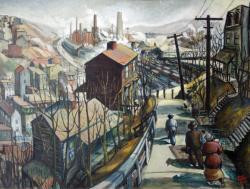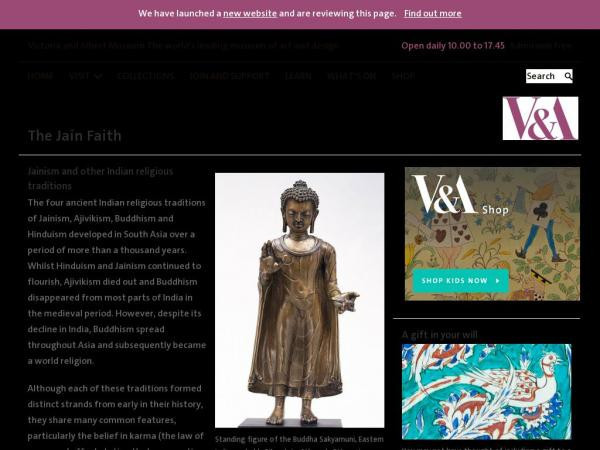Kate Harris
Social Studies teacher
Pittsburgh CAPA
Middle School (13 to 15 years old), High School (16 to 18 years old)
Teacher/Educator
Language Arts And English, Civics, Literature, Cultures, Economics, Social Studies, Geography, Writing, US History, Arts, Other
I'm a history-lover, art fan, and bookworm. I taught high school history (U.S. History and World Religions) for ten years in North Carolina, teach currently in Pittsburgh, PA, and am working to help teachers make the most of this new resource!
Kate Harris's collections
Pittsburgh's Urban Renewal
<p>This collection was created to support a workshop on integrating primary sources and student writing for teachers at Peters Township High School. These resources can be used to design a document-based question to answer the following inquiry:</p><p>Were Pittsburgh's urban renewal programs in the 1950s and 60s ultimately helpful or harmful?</p><p>Teachers may want to excerpt the documents included in this collection before giving them to students to use. You may also want to introduce students to the concept of "purposeful annotation" as they read through the documents (resources included).</p><p>Finally, an articles on urban renewal today and a lesson plan from Global Oneness Project on gentrification and urban renewal in Seattle provide additional resources for teachers.</p><p>Tags: C3, Inquiry, urban renewal, demolition, construction, slums, Teenie Harris, Charles Olmstead, Pittsburgh</p>
 Kate Harris
Kate Harris
17
Pittsburgh Landscape
<p>This collection was prepared for a workshop with Pittsburgh Public School teachers about integrating the visual arts with Social Studies curriculum. It models how to use the claim-support-question visible thinking strategy as well as the use of historic lenses that suggest different questions to ask about a work of art.</p><p><br /><br /></p><p>The content focus of this collection is Pittsburgh during the Great Depression. </p><p><br /><br /></p><p>Tags: Pittsburgh, Great Depression, 1930s, New Deal, steel mills, workers, economy</p>
 Kate Harris
Kate Harris
9
Pittsburgh 1932
This is a collection of images and documents that give historical context for the poem "Pittsburgh 1932." The poem itself tracks a city's changing economic landscape during war years and the Great Depression.
Students can use this collection directly to explore the literature and history.
 Kate Harris
Kate Harris
25
Pangu and the Chinese Creation Story
<p>This student activity teaches students about the Chinese creation story of Pangu and introduces them to other common symbols in ancient Chinese mythology. </p><p>Guiding questions include:</p><p>-How does this story compare to other creation myths you may know? Are there common elements?</p><p>-In what way does this story reflect a distinctly Chinese culture or system of belief?</p><p>Tags: Pan gu, Panku, creation, origin, myth, compare contrast, yin yang, Taoism, Daoism, Buddhism, Buddhism, Confucius, Laozi, dragon, qilin, turtle, phoenix, ancient China, religion</p>
 Kate Harris
Kate Harris
11
Origin Stories from Around the World
<p> Creation myths, or origin stories, tell us what a culture believes about how humans came to be. They can also tell us much about what that culture values. These are often religious or spiritual explanations for human life. </p><p>Choose one of origin stories on this page to focus on. Read, watch, or listen to the story. Then, create a visual that illustrates a scene in the story that you think is revealing about that culture's values. Finally, write a paragraph summarizing what you learned about that culture based on their origin story.</p><p>To recap:</p><p>1. Read/watch listen.</p><p>2. Create a visual of 1 scene in the story. </p><p>3. Write a paragraph summarizing what you learned about that culture based on their origin story. <br /></p>
 Kate Harris
Kate Harris
8
Numbers
<p>This collection is an example of how the Learning Lab could be used to create number or alphabet books for younger students. Students can search for the numbers and letters represented in the art, sculpture, and artifacts that exist throughout the Learning Lab. </p><p>Alternatively, students could be given a specific theme (animals, for example) and be tasked to find images representing the theme for each letter or number. Annotation (notebook tabs) can be used to include additional text or explanations. Quiz questions could be used to ask "how many ________ are in this image?".</p><p>Have fun!</p><p>Tags: reading, books, alphabet, numbers, counting, math, young learners, early childhood</p>
 Kate Harris
Kate Harris
17
Native American Policy Overview
<p>During the late 19th century, reformers in the United States like Helen Hunt Jackson pushed for a change in attitude towards Native Americans. Rather than simply viewing them as enemies from whom land could be gained, these reformers promoted the concept of assimilation, or helping Native Americans adopt the characteristics of white culture that would allow them to be successful in American society. One of the ways they did this was through the use of Christian boarding schools for Native American children. Federal laws, like the Dawes Act of 1887, also supported this goal. </p>
<p>As you investigate the artifacts, images, and readings in this collection, consider whether you think assimilation was a beneficial policy for Native Americans. How did Native American families respond to assimilation?</p>
<p>Tags: point of view, assimilation, assimilate, American Indians, Carlisle, Jim Thorpe, allotment</p>
 Kate Harris
Kate Harris
14
National Parks
This topical collection focuses on the establishment of a national parks system in the United States. Items in the collection can be used to address the following questions:
-What is the difference between "conservation" and "preservation"? Which view towards nature seems to influence our national parks system today?
-In United States history, there is often a tension between progress and protection, or change and tradition. How is that tension reflected in the story of the national parks system? Consider the economic demands of a growing nation and the impulse to make the natural world accessible to all members of U.S. society.
Tags: Parks, environment, conservation, preservation, Muir, Sierra Club, Roosevelt
 Kate Harris
Kate Harris
19
My Smithsonian Closet
<p>You could be exceptionally well-dressed if the Smithsonian were your closet. #MySmithsonianCloset</p>
 Kate Harris
Kate Harris
29
Look for the Helpers: Analyzing Social Movements
<p>Mr. Rogers is quoted as saying, “When I was a boy and I would see scary things in the news, my mother would say to me, "Look for the helpers. You will always find people who are helping." This collection will give students a framework to "look for the helpers"--the people who are trying to change society for the better during difficult times. Students will be introduced to a variety of strategies and tactics used in social movements, and consider how these might apply to an area of their own interest.</p><p>Included is a chart listing possible strategies for social movements that encourages students to find examples of tactics/strategies from the collection and determine the goals of each.</p><p>Opportunities for extension include:</p><p>Identify a social movement that relies on more than one strategy (most do). Can you create a "recipe" listing the various tactics used to create a successful movement?</p><p>Who is involved? Choose one of the examples from above to study further. Who was involved in that particular tactic or strategy? Consider different occupations (teacher, writer, church leader, student, mother) and also different demographics (gender, race, age, ethnicity, etc.)</p><p>What's missing? Are there strategies that you have encountered in your research that don't fit into this chart?</p>
 Kate Harris
Kate Harris
31
LGBT Rights and History
<p>This teaching collection contains resources to support a more inclusive United States history curriculum. It includes documents, videos, and websites related to the LGBT (Lesbian, Gay, Bisexual, Trans-, and other sexual minorities) movement. The collection is divided into the following themes:</p><p>-People</p><p>-Pride and Diversity of Experiences (reflecting a range of LGBT identities)</p><p>-History, Challenges, and Accomplishments</p><p>-Additional Resources</p><p>This is a work-in-progress based on the digitized materials within the Smithsonian Learning Lab's collection--it is not meant to be wholly definitive or authoritative. </p>
 Kate Harris
Kate Harris
43
"Let Women Fly!": Female Aviators and Astronauts
<p>Did you know that astronaut Mae Jemison carried a picture of aviator Bessie Coleman in her uniform pocket? Or that astronaut Sally Ride was a major supporter of vice presidential candidate Geraldine Ferraro? Maybe you knew that Jane Briggs Hart was Michigan's first female helicopter pilot and flew her husband, the late Senator Hart, to his political campaign stops as well as being vocal and liberal political activist? Find out about these inspirational women and others in this collection. This topical collection is a great starting point for research about female aviators and astronauts, and includes articles, images, artifacts, and video. Some guiding questions to consider might be:<br />-Why do you think it was so challenging for female pilots to become accepted? Compare the inclusion of women in aviation to other industries and fields. <br />-What role did the military play in the growth in the number of female aviators?<br />-What connections can you find between various female pilots and astronauts?<br />-Is being the "first" of something a political act? How do many female aviation leaders use their public voice?</p><p>#BecauseOfHerStory<br /></p>
 Kate Harris
Kate Harris
48













